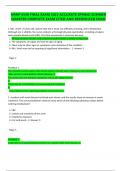Samenvatting
Samenvatting Psychology 2e, ISBN: 9781680923278 Introduction Psychology And Technology (0HV10)
- Instelling
- Technische Universiteit Eindhoven (TUE)
- Boek
- Psychology 2e
Samenvatting van de hoofdstukken 1-10,12 en 14 van het boek Psychology 2e voor het vak Psychology and Technology van de TU Eindhoven
[Meer zien]














